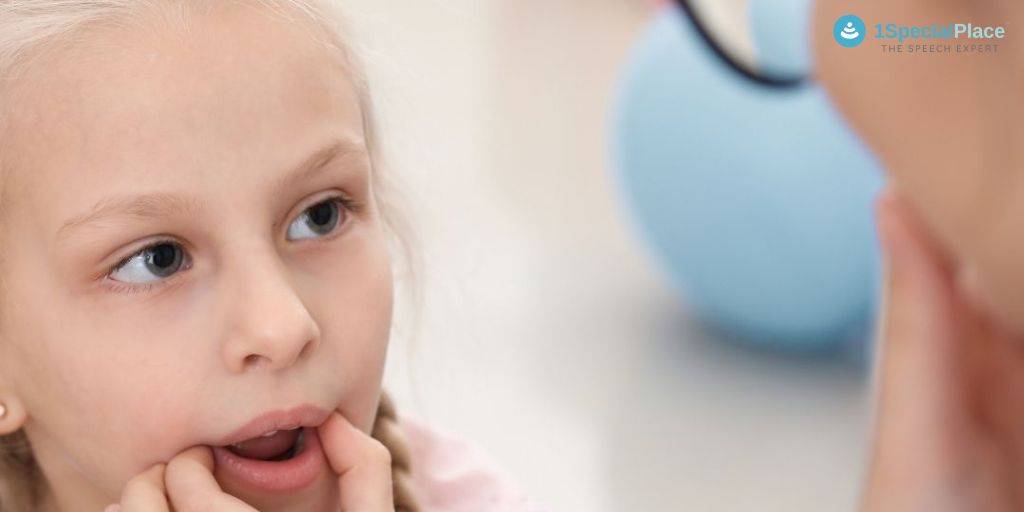
Teaching the /L/ Speech Sound
Teaching the /L/ Speech Sound
The /l/ speech sound is an alveolar sound. This means that the sound is produced by touching the tongue tip to the alveolar ridge. Children usually acquire the /l/ sound by 4 years of age. Often, children with speech sound disorders have difficulty producing the /l/ sound correctly. This blog will cover activities and steps to teach the /l/ speech sound.
Steps to teach the /l/ sound
- To teach the /l/ sound you will first place the tongue tip on the alveolar ridge. You can help your child by touching their alveolar ridge using a lollipop or your finger. Sometimes it can be a bit tricky to get the tongue up. If that’s the case, you can apply some honey or peanut butter to your child’s front teeth. Have them lick it with their tongue. You may also use an electric toothbrush to stimulate the alveolar ridge. Once you do that, ask them to place their tongue tip there.
- Next, ask them to hold the tongue tip in place. Then ask them to turn their voice on and say /l/. Ask them to prolong it. It will sound like /l…..l…..l…./. If your child has difficulty in turning their voice on, have them put their hands on your throat when you make the /l/ sound. Then place it on their own throat and help them voice it out.
- Ask them to relax and then feel the airflow out the sides of their tongue. If your child has difficulty with air flowing out the sides of their tongue, with their tongue tip in place on the alveolar ridge have them breathe in so they can feel the air flowing over the sides of their tongue.
Another way to teach the /l/ Sound
If your child can produce a voiced /Th/ sound as in “this” or “them” then you can teach the /l/ sound by shaping it from the Th sound. First, have your child say Th all by itself. Then you can ask your child to slide the tongue up to the alveolar ridge while still voicing. This will help you get the /l/ sound.
Using the /l/ Sound in Syllables
Once your child is able to produce a /l/ sound all by itself, you can then use it in syllables. It is important to note that many times practicing the /l/ sound by itself can be difficult. In that case, you can start with syllables. Practise different combinations such as /la, li, lu, lo/ etc.
Using the /l/ Sound in Words
When your child can say the syllables above with a nice /l/ sound, you can start working on words. You can start words beginning with the /l/ sounds. You can later, also use the sounds in the final and medial positions of the words. You can start by making a list of 10-20 easy words. If your child is too young, use pictures instead of word lists. You can use different games such as bingo, tic-tac-toe, etc. Once your child is able to say these words with 70% accuracy or better, you can try putting them into a sentence.
Using the /l/ Sound in Sentences
When your child is able to produce the /l/ sound at the beginning of words then practice the initial /l/sound in sentences. For example “Lola loves to lick her _________ (lollipop).” Fill in the blank with the initial /l/ words you have been practicing. You can use words with the /l/ sound in the middle and final positions as well.
Using the /l/ Sound in Stories/ Picture Scenes
You and your child can practice the /l/ sound while reading stories out loud. If your child is too young, use picture scenes designed for the /l/ sound and ask your child to describe the pictures. You can also ask them to re-tell the stories that you just narrated to them.
Using the /l/ Sound in Conversation
When your child is successful with the /l/ sound while reading, narrating a story, or describing a picture, you can move on to a conversation-level activity. You may notice that it is at this point that your child may forget to pronounce the /l/ correctly. You can always give them feedback and help them correct it.
Every child is different, learns at a different pace, and may have unique challenges with pronouncing some words. Always consult a speech-language pathologist to get a better understanding of your child’s speech problems. Get started today! We look forward to sharing with you how our services can benefit your child’s speech and language development.
- Tips to Promote School Readiness - February 28, 2023
- Baby Sign Language - February 24, 2023
- Summer Speech Activities for Children - February 21, 2023

Leave a Comment
(0 Comments)